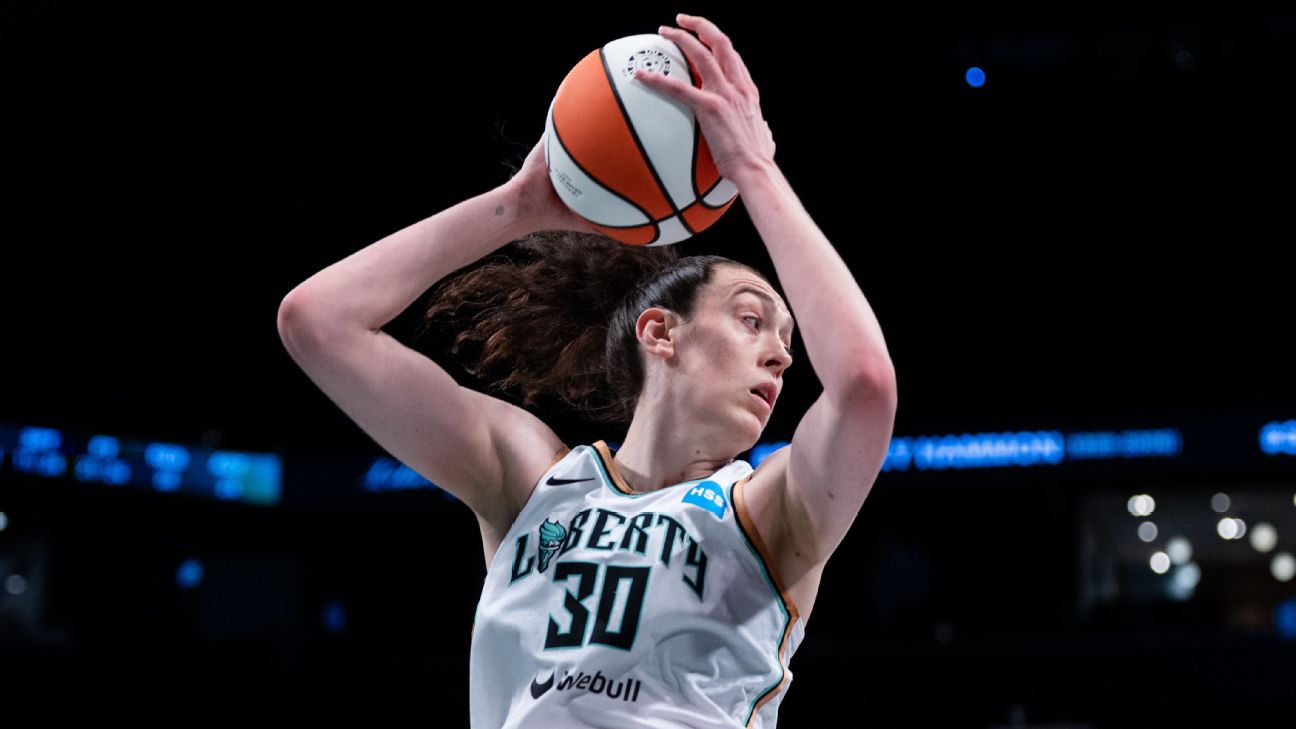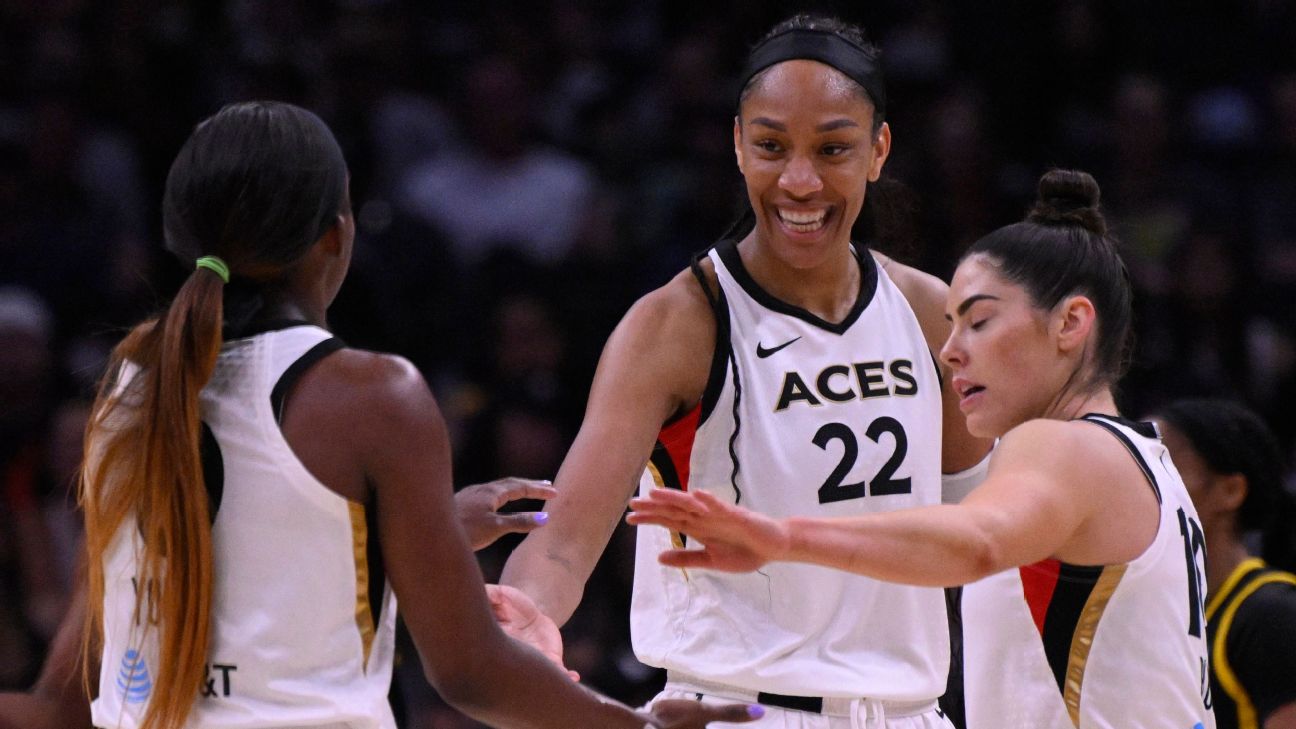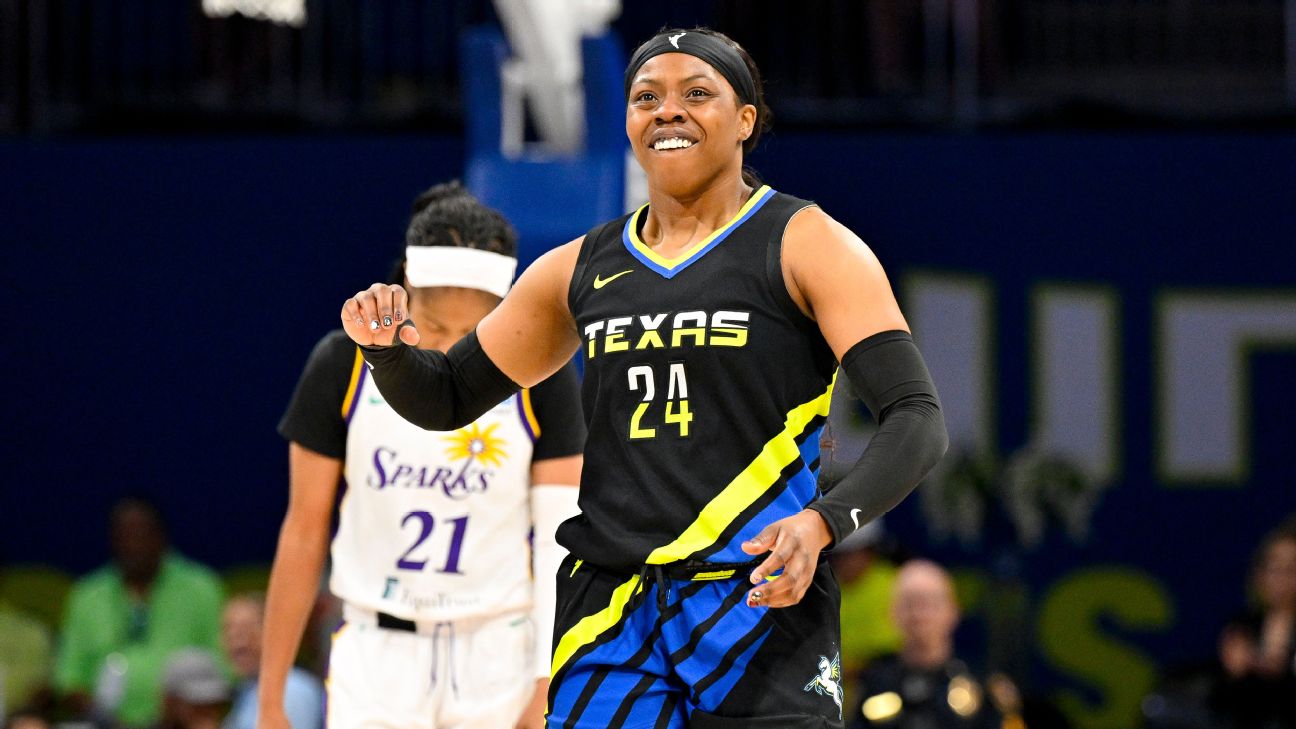(Editor's note: This story was originally published in August 2023.)
Diana Taurasi
was still a teenager when Geno Auriemma first witnessed her scoring greatness up close.
In the summer of 2000, months before they teamed up at UConn, Taurasi was
competing for the United States at the U18 Junior World Championship qualifying tournament in Argentina. Heading
into the semifinals, Auriemma, Team USA's coach, told Taurasi she needed to score 30 points for the Americans to
win.
She dropped 26.
"That's when I realized when this kid sets her mind to do something, it's going to get done," Auriemma told
ESPN. "And that hasn't stopped for the last 20-some years."
Taurasi went on to become the greatest scorer in WNBA history.
The 42-year-old Phoenix Mercury star is
the all-time scoring leader by more than 2,500 points. Her 19.2 career PPG average ranks third among players
with at least 200 appearances. She owns WNBA records for made field goals (3,145), 3-pointers (1,347) and free
throws (2,387), and on Thursday, halfway through her 19th season, became the only WNBA player to score
10,000 points. Taurasi entered Thursday's game 18 points shy of the milestone and finished with a season-high 42 to bring her career total to 10,024.
ESPN's Josh Weinfuss sat down with Taurasi [in 2023 when she passed the 10,000-point mark] for an exclusive conversation about her shooting form, basketball
acumen, longevity and confidence ("I think I'm going to make every shot," she said). We break down her shot step
by step, with help from Taurasi herself.
How Taurasi practices mechanics
What's the secret to Taurasi becoming an elite scorer? Work. Lots of work.
"You've got to show up every day and you have to be willing to sacrifice a lot of things," she said. "That's
what you have to do. If you really want to do something different than everyone else then you have to do
things that are different."
Taurasi puts up 400 to 500 shots at an uncomfortable pace two days a week during the offseason. She misses a
lot of those shots.
"You don't get to put your little Instagram video of you making every shot," she said. "That's not reality."
Instead of hitting five uncontested shots in a row, Taurasi works on untraditional shots -- off-balance, off
one leg, her feet staggered, jump backs -- anything to create the unpredictability that games provide.

“When you get someone who’s talented in that [fearless] mindset and
works on her game as much as she’s worked on her game over the years, that’s what happens.”
Geno Auriemma
How Taurasi maintains consistency
If Taurasi was to put on a tape of her playing in the fourth grade, she thinks her
shot would look exactly the same.
"There's certain things that work for me," she said.
Taurasi has figured out how to adapt her game as she has aged, just like some of the other greats did
throughout their careers. Bird described Taurasi's evolution as making additions to her game, such as the
step-back 3 she perfected during her time in Russia.
"Maybe the way Jordan evolved, maybe the way Kobe evolved," Auriemma said. "They had this reckless abandon
about them when they were younger, and Dee, she would go out of her way to create contact. She loved the
physicality of the game. She loved being in the lane. She loved mixing it up. You don't score a lot of points
unless you get to the free throw line and make a lot of 3s. So, she did that."

“Dee will be one of the best, if not the best scorer in WNBA history, no
matter what her scoring number is, no matter what, no matter where she finishes in points.”
Sue Bird
How Taurasi embraces her star
Among all the honors bestowed upon Taurasi, getting the green light to shoot at will
for the better part of her college and WNBA careers, has been one of the most fruitful.
And it has been glorious.
"It's the best thing in the world," Taurasi said. "And the green light doesn't come from just one person. It
comes from a trust of a whole, and when you have that trust, it really is fun to play the game of basketball."
Facing a player with the green light isn't easy, Bird said.
"As a defender, you can take no possession off," Bird said. "It's exhausting, more so mentally than
physically."
Taurasi has embraced her freedom to shoot and it has fed her scorer's mentality, which was stoked by coaches
early in her WNBA career. She was directed to be strictly a scorer, but Taurasi also knew when to give herself
the yellow light.
"You don't give the green light to anybody who's dumb, right?" Auriemma said. "I don't care how good a
shooter they are. If they're dumb, you don't give them the green light because they'll end up taking bad shots
at the worst time and those are the ones they'll miss."

“She’s one of the greatest shooters -- men and women -- that
you’ve ever seen.”
Sandy Brondello
When Taurasi got to UConn, Auriemma told her to wear No. 3 because she would be the Babe Ruth of women's
basketball if she lived up to her potential.
But Taurasi doesn't want to decide her legacy. That's for everyone else to do, she said. Reaching 10,000
points will be another record in a career full of them.
"Ten thousand is going to be something that hopefully means something to women's basketball," Taurasi said,
"and it's going to be, I feel like, a bigger deal when someone breaks it."
Bird doesn't hesitate to sum it up.
"I think Dee's legacy is going to be all the things you can read on a piece of paper," Bird said. "In my
mind, she's the best player the WNBA has seen."
Auriemma thinks Taurasi's feat will become even more appreciated as the league continues to grow.
"As the WNBA is getting more and more and more traction and recognition among the majority of the fans in
America," Auriemma said, "they're going to start realizing that this kid was the best basketball player in the
world for a long time."










